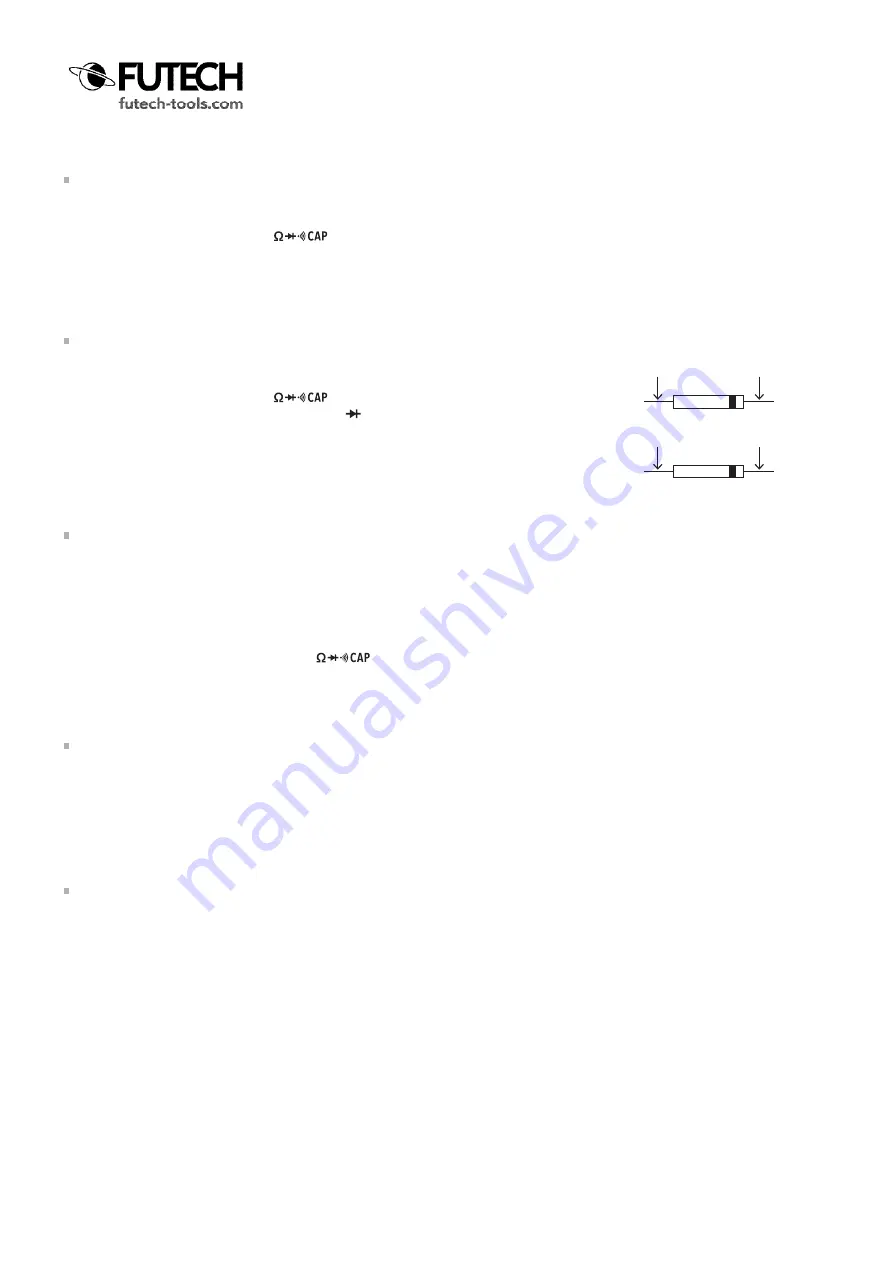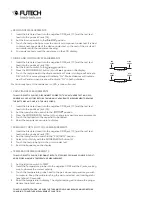
RED
PROBE
Forward Test
BLACK
PROBE
BLACK
PROBE
Forward Test
RED
PROBE
RESISTANCE MEASUREMENTS
1. Insert the blank test lead into the negative COM jack [13] and the red test
lead into the positice V jack [14].
2. Set the function switch to the
position.
3. Touch the test probe tips across the circuit or component under test. It is best
to disconnect one sade of the device under test, so the rest of the circuit will
not interfere with the resistance reading.
4. For resistance tests, read the resistance on the LCD display.
DIODE AND CONTINUITY MEASUREMENTS
1. Insert the blank test lead into the negative COM jack [13] and the red test
lead into the positice V jack [14].
2. Set the function switch to the
position.
3. Press the MODE/INRUSH button [6] until appears in the display.
4. Touch the test probes to the diode under test. Forward voltage will indicate
0.4V to 0.7V. reverse voltage will indicate “OL”. Shorted devices will indicare
near 0mV and an open divece will indicate “OL” in both polarities.
For Continuity tests, if the resistance is <50Ω, a tone will sound.
CAPACITANCE MEASUREMENTS
·
to avoiD electic shocks, Disconnect power to the unit unDer test anD Dis-
charge all capacitors before taking any capacitance measurements. remove
the batteries anD unplug the line corDs.
1. Insert the blank test lead into the negative COM jack [13] and the red test
lead into the positice V jack [14].
2. Set the rotary function switch to the
position.
3. Press the MODE/INRUSH button [6] to change to capacitance measurements.
4. Touch the test leads to the capacitor to be tested.
5. Read the capacitance vanue in te display.
FREQUENCY OR % DUTY CUCLE MEASUREMENTS
1. Insert the blank test lead into the negative COM jack [13] and the red test
lead into the positice V jack [14].
2. Set the rotary function switch to the “VAC/Hz/%” position
3. Select Hz or % duty with the MODE/INRUSH button [6]
4. Touch the test probe tips to the circuit under test
5. Read the frequency on the display
TEMPERATURE MEASUREMENTS
·
to avoiD electic shock, Disconnct both test probes from any source of volt-
age before making a temperature measurement.
1. Set the function switch to TEMP
2. Insert the Temperature probe into the negative COM and the V jacks, making
sure to observe the correct polarity.
3. Touch the temperature probe head to the part whose temperature you wish
to measure. Keep the probe touching the part under test until reading stabi-
lizes (about 30 seconds).
4. Read the temperature in display. The digital reading will indicate the proper
decimal point and value.
·
to avoiD electricshock, be sure the thermocouple has been removeD before
changing to another measurement function.
























